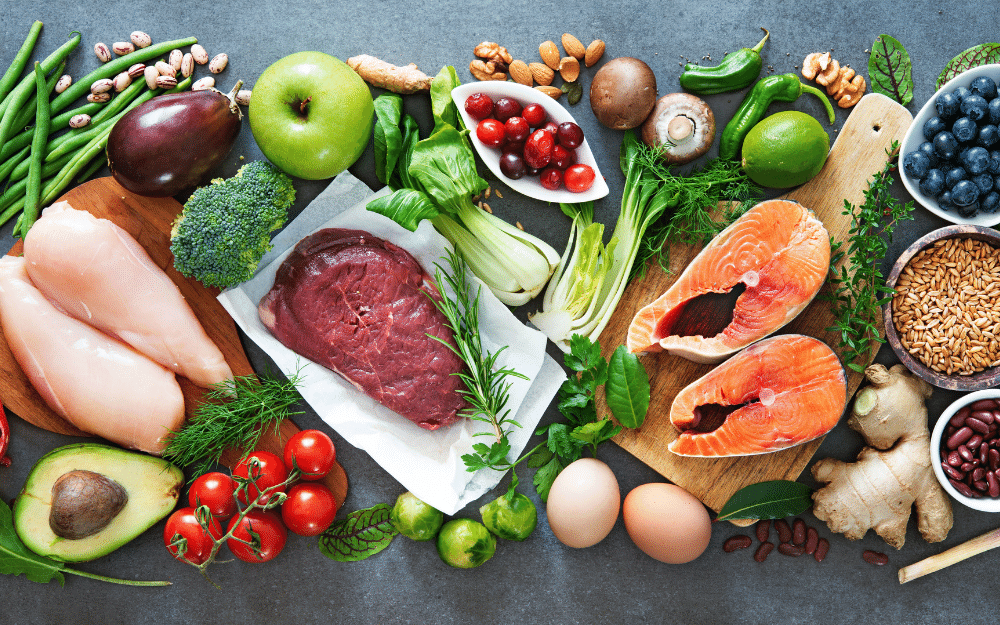Fall 2022
Nutritional Support for Injury & Recovery

The main goals of nutrition during recovery from an injury are to preserve lean mass and strength, promote healing, maintain energy balance, reduce inflammation, and stay on track for a projected return date. Special requirements that need to be considered for injured tactical athletes include altered energy needs, increased protein requirements, and nutritional support for pre-and post-surgery.
Recovery from injury can be a bit of a balancing act. It is important to determine and meet the specific energy needs during injury. Consuming too few or too many calories during this recovery period can hinder recovery in various ways. On one hand, inadequate energy intake during injury can cause accelerated muscle loss and delay the healing process. While on the other hand, energy in excess results in unwanted fat deposition. Working with a dietitian can be advantageous during this time to ensure the individual’s nutritional needs are being met by considering their resting metabolic rate, daily activity level, body composition goals, and micronutrient needs for injury.
General Nutrition for Injury Recovery
Though energy expenditure might be lower during injury due to a limited ability to participate in daily activities, don’t forget the healing process still requires a significant amount of calories. This is not the time to drastically cut calories.
When recovering from injury it is important to focus on consuming a variety of high-quality foods which contain the necessary vitamins and minerals to adequately support the healing process. Meal and snack frequency should remain similar to before the injury, aiming to have a meal or snack every 2-3 hours. When selecting meals and snacks try to include a variety of antioxidant-rich fruits and vegetables which can help reduce inflammation and promote healing. Whole grains such as brown rice, oatmeal, quinoa, whole wheat bread, and pasta contain a significant amount of B vitamins which are important for energy metabolism and protein repair. They also tend to be a good source of fiber which can help with satiety. While it is likely that a decrease in carbohydrate intake is warranted while activity levels are lower, moderate amounts of whole grains should still be included on every plate.
Adequate protein is essential for repairing tissue and minimizing muscle loss. Aim for a daily dietary protein intake of 1.2 to 2.0g/kg body weight. Eating a meal or snack that includes protein every three to five hours can help support the maintenance of lean mass. Quality sources of protein include lean meat, chicken, turkey, pork, eggs, dairy, fish, soy, beans, and nuts.
Sources of healthy fats such as olive oil, fish, avocado, nuts, and seeds have been found to help fight inflammation and can be beneficial to incorporate when recovering from injury. Though healthy fats provide many benefits it is important to consume them in moderation, especially when caloric needs might be reduced, as they tend to be higher in calories. Additionally, unhealthy fats (saturated and trans fats) typically prevalent in fried foods or processed meats can contribute to inflammation. Those with diets higher in saturated and trans fats could benefit from switching out these less healthy fats and opting for healthier fats which can help reduce inflammation and promote healing.
Sufficient hydration is also necessary to efficiently transport nutrients throughout the body. Though fluid needs generally will be lower since there won’t be as much physical exertion, it is still important that they are meeting their hydration needs. Tactical athletes should consume about half their body weight (in pounds) in ounces of water or other low-calorie beverages such as unsweetened tea, skim milk, and 100% fruit juice.
Limited alcohol consumption during injury is advantageous for the recovery process. Alcohol not only contains extra calories that provide no nutritional benefit, but it also can slow down the recovery process if consumed in excess. Research has shown that alcohol consumption impairs muscle protein synthesis and wound healing. Lastly, alcohol has a diuretic effect which can foster dehydration.
Soft Tissue Injury
Recent research suggests that vitamin C in combination with gelatin helps promote greater collagen production to heal tendons, ligaments, and muscle. Sources of vitamin C include red bell pepper, orange or apple juice, kiwi, oranges, broccoli, and strawberries. Current recommendations are to consume vitamin C and 10 grams of gelatin 30-60 minutes before exercise.
Leucine and copper also play a major role in the healing of soft tissue. Leucine aids in the prevention of muscle breakdown as it helps repair and builds muscle tissue. Common sources include lean meat, chicken, turkey, pork, eggs, dairy, fish, soy, beans, and nuts. Copper contributes to the regeneration of elastin and helps form red blood cells. Foods rich in copper include pumpkin and sunflower seeds, nuts, beans, whole grains, and shitake mushrooms.
» ALSO SEE: George Mason ATCs Team with Local Firefighters
When it comes to wound healing, there is a clear association of micronutrients, such as zinc, vitamin A, and omega-3 fatty acids. Zinc has been found to aid with the wound healing process as it helps grow new tissue. Incorporate this into diets through beef, pork, fortified breakfast cereal, cashews, yogurt, hummus, beans, and almonds. Vitamin A also contributes to the wound-healing process and helps manage inflammation. It is commonly found in sweet potatoes, spinach, carrots, cantaloupe, red peppers, dairy, fish, and broccoli.
Bone/Joint Injury
Calcium and vitamin D-rich foods are essential for optimal bone formation and work best when paired together as vitamin D absorbs calcium to help build and maintain bones. Both can be found in vitamin d fortified milk, cheese, yogurt, orange juice, and salmon. Other sources of calcium include collard greens, broccoli, and salmon. Vitamin D is prevalent in fortified cereals, and eggs.
Magnesium is another powerful nutrient with a lot to contribute to the healing process. One of its many functions is its role in assisting with the absorption and metabolism of calcium and vitamin D. It also improves circulation and contributes to protein synthesis.
Elaine Wanstreet joined the Purdue sports nutrition staff in 2017. She is currently the assistant director of the Boilermakers’ sports nutrition staff.



